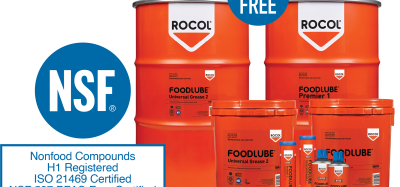Standard for food safety management
- Like
- Digg
- Del
- Tumblr
- VKontakte
- Buffer
- Love This
- Odnoklassniki
- Meneame
- Blogger
- Amazon
- Yahoo Mail
- Gmail
- AOL
- Newsvine
- HackerNews
- Evernote
- MySpace
- Mail.ru
- Viadeo
- Line
- Comments
- Yummly
- SMS
- Viber
- Telegram
- Subscribe
- Skype
- Facebook Messenger
- Kakao
- LiveJournal
- Yammer
- Edgar
- Fintel
- Mix
- Instapaper
- Copy Link
Posted: 21 November 2005 | Jacob Færgemand, Project Leader, ISO 22000 working group | 1 comment
Food safety hazards may be introduced at any stage of the food chain and adequate control throughout the food chain is therefore essential. Thus, food safety is a joint responsibility that is principally assured through the combined efforts of all the parties participating in the food chain.
Food safety hazards may be introduced at any stage of the food chain and adequate control throughout the food chain is therefore essential. Thus, food safety is a joint responsibility that is principally assured through the combined efforts of all the parties participating in the food chain.
Food safety hazards may be introduced at any stage of the food chain and adequate control throughout the food chain is therefore essential. Thus, food safety is a joint responsibility that is principally assured through the combined efforts of all the parties participating in the food chain.
There is an underlying belief that harmonisation is possible across, what is today, a global industry; and that sound food safety directives alone are not enough. It is imperative to maintain communication and raise awareness of the potential hazards throughout the entire food chain and not just within one’s own company or department.
Scope
ISO 22000 sets up requirements for food safety management systems and can be applied to all types of organisations within the food chain – ranging from feed producers and primary producers through to food manufacturers; transport and storage operators and subcontractors; retail and food service outlets. Inter-related organisations such as producers of equipment, packaging material, cleaning agents, additives and ingredients will also be included.
Content
ISO 22000 combines recognised key elements to ensure food safety along the food chain, in three ways.
Interactive communication
Communication along the food chain is essential to ensure that all relevant food safety hazards are identified and adequately controlled at each step. This implies communication of the needs of the organisation to parties both upstream and downstream in the food chain.
Communication with customers and suppliers, based on the information generated through systematic hazard analysis, will also assist in substantiating customer and supplier requirements with regard to their feasibility, need and impact on the end product.
Hazard control
ISO 22000 dynamically combines the HACCP principles and application steps with prerequisite programmes, using hazard analysis to determine the strategy to be used to ensure hazard control by combining the prerequisite programmes and the HACCP plan.
System management
The most effective food safety systems are designed, operated and updated within the framework of a structured management system and incorporated into the overall management activities of the organisation. This provides maximum benefit for the organisation and interested parties. ISO 22000 takes due consideration of the requirements of ISO 9001:2000 in order to enhance compatibility of the two standards and to allow their joint or integrated implementation.
Who made it
ISO 22000 has been developed by working group WG 8, Food safety management systems, of ISO technical committee ISO/TC 34, Food products. Experts from 23 countries have participated in the working group and the following organisations have liaison status:
- Confederation of the Food and Drink Industries of the European Union (CIAA)
- Codex Alimentarius Commission
- CIES/Global Food Safety Initiative
- World Food Safety Organization (WFSO)
Links to other standards
There is a natural correlation between the new ISO 22000 standard and other well-known management standards such as ISO 9001 (quality management) and ISO 14000 (environmental management).
As an extension to the ISO 22000 standard – which contains requirements for managing food safety for which a company can seek certification – the following are being prepared: a standard describing requirements for certifying bodies (22003), expected march 2006 and a standard describing requirements of traceability (ISO 2005), expected 2007.
A user manual (ISO 22004) has also recently been published and is currently available – in addition to the ISO 22000 standard itself.
What’s in it for the industry?
For an ISO standard to be granted it must have consensus. Forty-four countries were able to vote to accept or reject the document and, in this case, it received 100 per cent of votes in favour – a rare situation. Also, to the benefit of our global industry, ISO standards are recognised in 148 countries worldwide.
ISO 22000 has been designed to have such flexibility that it enables a tailor-made approach to food safety depending on which segment of the food chain a company is involved in. Considering that the standards and procedures required for high risk areas in one food sector may not be appropriate in another, it does not take a one-size fits all approach. In addition, unlike some other schemes, it does not take a checklist approach – mainly owing to the wide scope of the standard; i.e. the entire food chain.
If a company seeks certification it must follow the local laws and rules on export markets, as well as implementing the requests of the customers. In summary, ISO 22000 requires that industry implements what is needed, depending on the foodstuff produced.










yes, Safety management is really important for all type of Industries now a days.